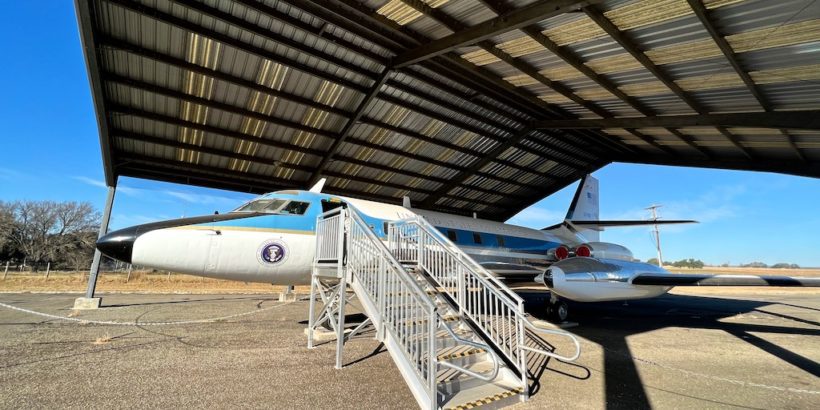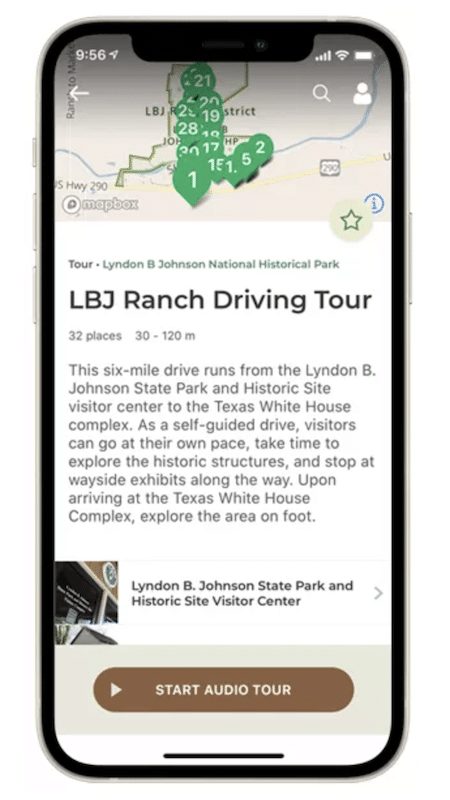It’s always fascinating tracing the history of former US presidents.
One US president that definitely did things his own way was LBJ. He was the first president to ever truly “work remotely” from the White House and did so in a major way at the LBJ Ranch.
And luckily, this ranch has been preserved by the National Park Service and offers a lot of interesting sites to check out today.
In this article, I’ll show you everything you need to know before visiting the LBJ Ranch.
Table of Contents
What is the LBJ Ranch?
The LBJ Ranch is part of Lyndon B. Johnson National Historical Park and the former home of the 36th president of the United States of America, Lyndon B. Johnson.
It’s where the president grew up and also where he resided on a part-time basis during his presidency. The ranch became a hotspot for world leaders and notable figures as well as extravagant barbecues.
Today, you can take a self-guided driving tour around the ranch and check out various sites located throughout the property like the Texas White House and the gravesite of LBJ.
Tip: Use the free app WalletFlo to help you travel the world for free by finding the best travel credit cards and promotions!
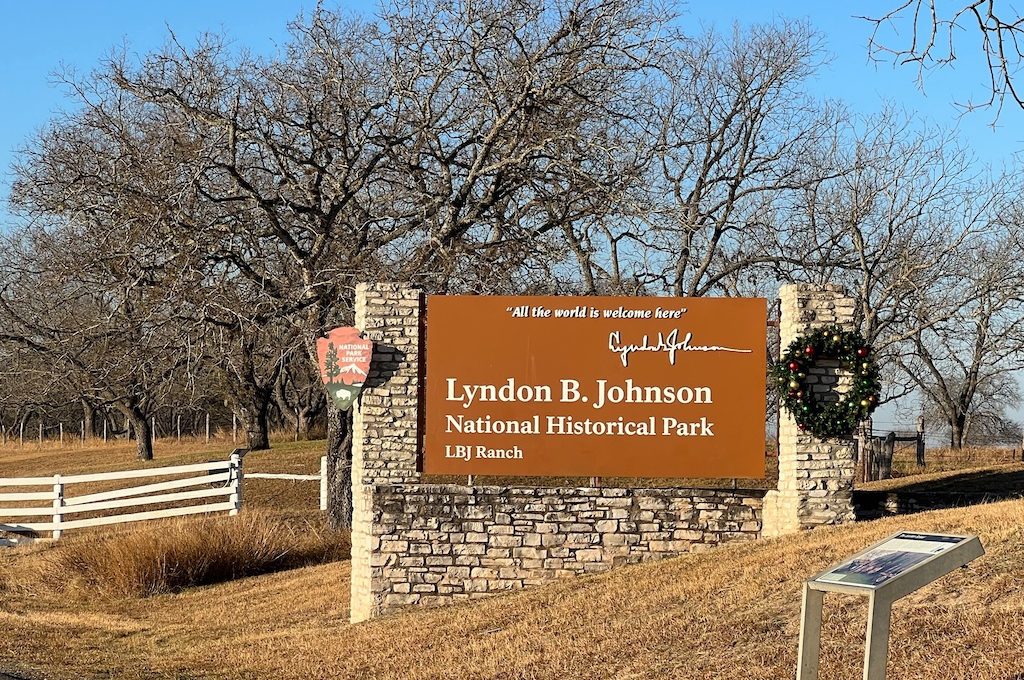
Where is the LBJ Ranch?
The LBJ Ranch is located at: 1048 Park Road #49, Stonewall, TX 78671.
This is approximately 60 miles outside of Austin, Texas, and about a 1 hour and 15 minute drive from Austin.
It’s easy to get confused with all of the LBJ sites in this area so let me break it down for you below.
First, there is the Lyndon B. Johnson National Historical Park.
The National Historical Park consists of two districts: the Johnson City District and the LBJ Ranch District. (The districts are about 20 minutes away from each other.)
The Johnson City District is where you can tour Johnson’s boyhood home and check out the Johnson Settlement where you’ll find restored structures from the 1800s among other things.
The LBJ Ranch District is where you’ll find the Texas White House, Air Force 1/2, the old school house, and quite a few other sites.
This article is specifically about the LBJ Ranch District and I’ll go into great detail about it below.
In addition to the National Park site, there is also a state park site called: Lyndon B. Johnson State Park and Historic Site.
The state park site is located on the south side of the Pedernales River, which is just a couple of minutes away from the LBJ Ranch District.
It’s at the state park where you can find sites like the Official Texas Longhorn Herd, American Bison Herd, and the Sauer-Beckmann Farm, a living history farm that preserves rural Texas life as it existed in 1918.
Technically, a visit to the LBJ Ranch District should begin at the state park, as that is where you can be issued your driving permit and map.
Other LBJ related sites in the (roughly 1-hour) vicinity include:
- LBJ Presidential Library (Austin, TX)
- LBJ Museum (San Marcos)
- Lady Bird Johnson Wildflower Center (Austin, TX)
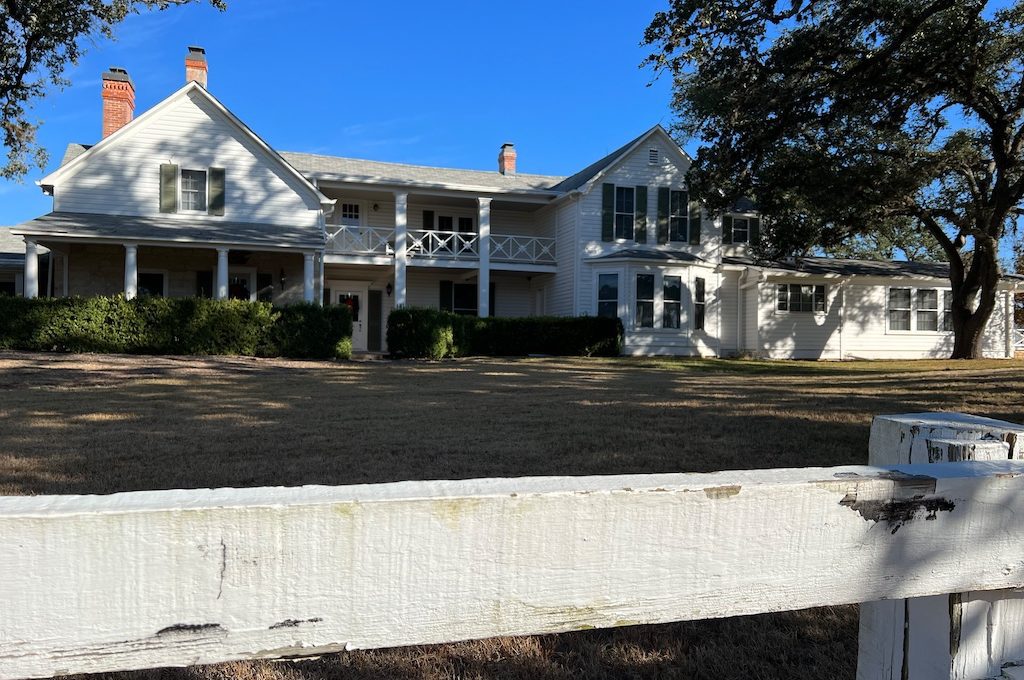
How do you access the LBJ Ranch?
It is free to visit the LBJ Ranch and hours are typically from 9 AM to 5 PM.
The NPS website says that you will be issued a driving permit and map from the Lyndon B. Johnson State Park and Historic Site, which is where I think you are supposed to begin your tour.
However, we did not know that and simply arrived at the entrance of the ranch and were never issued a driving permit.
What is there to see at the LBJ Ranch?
There’s a lot to check out at the LBJ Ranch but here are eight sites that you will definitely want to see on your visit.
If you give yourself two hours you should have enough time to thoroughly enjoy these sites but if you want to visit any of the related sites, you’ll probably need more time.
Tip: If you are into guided audio tours, you can download the NPS app and rely on that to get you through the tour.
LBJ’s old school house
Just before the entrance of the LBJ Ranch, you’ll come across the Junction School.
LBJ only attended the school for a few months as a four year old but it’s still an iconic old school house building.
There’s an interactive exhibit you can listen to while visiting but it’s still just cool to step in and think about what school would’ve been like for the 30 kids (spanning seven grades) attending the small school house.
The school was open to visit before the actual ranch opened so it’s a nice way to kill some time if you arrive early. (You’ll find the entrance to the school in the back.)
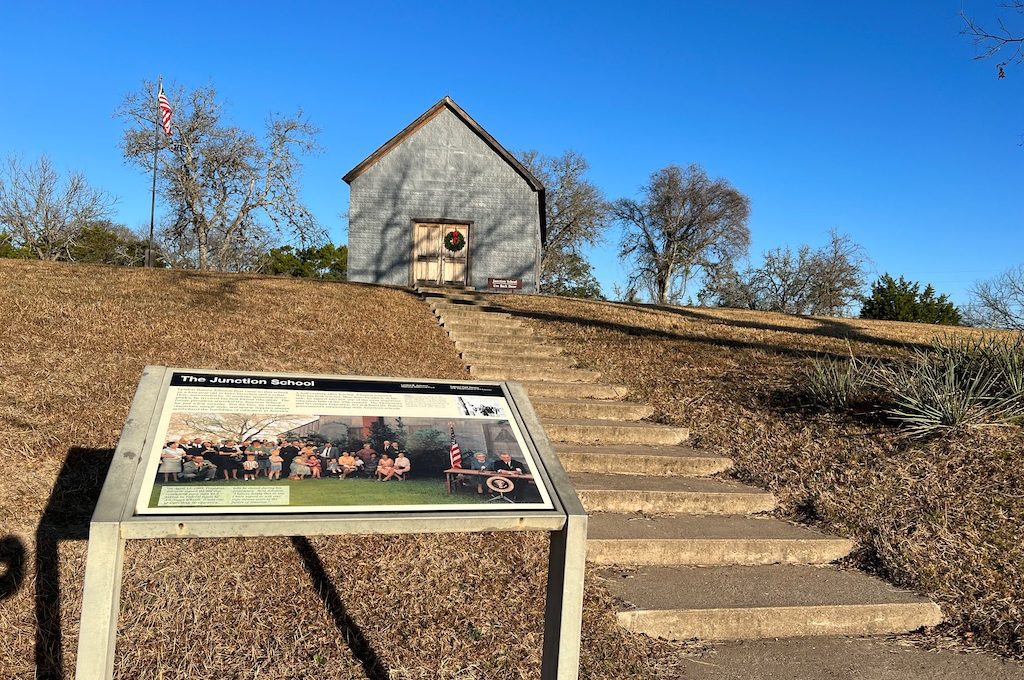
Johnson Family Cemetery (LBJ’s grave)
Shortly after you enter the ranch, you’ll come across the LBJ birthplace on your right and then you’ll see the Johnson Family Cemetery on your left.
The cemetery is private property so you’re not allowed to enter but you can view the gravesite of Lyndon B. Johnson and Lady Bird Johnson from the exterior.
They have the two most prominent gravestones so they are very hard to miss.
The wall enclosing the cemetery was built in 1946 by Frank Seaward, a rock mason from Stonewall. It was meant to give identity to the cemetery but also to counteract effects of flooding from the Pedernales River.
Interestingly, if it weren’t for the flooding river, this cemetery might not exist.
The first person to be buried here was LBJ’s great grandmother, Priscilla Buntonin in 1905. And the reason why they chose the spot was because they could not cross the flooded river and get to a different cemetery.
The visit to the cemetery was particularly interesting to us because it had only been a couple of months since we visited JFK’s grave in Washington DC and the two gravesites are vastly different.
Related: 16 JFK Assassination Related Sites in Dallas/Fort Worth
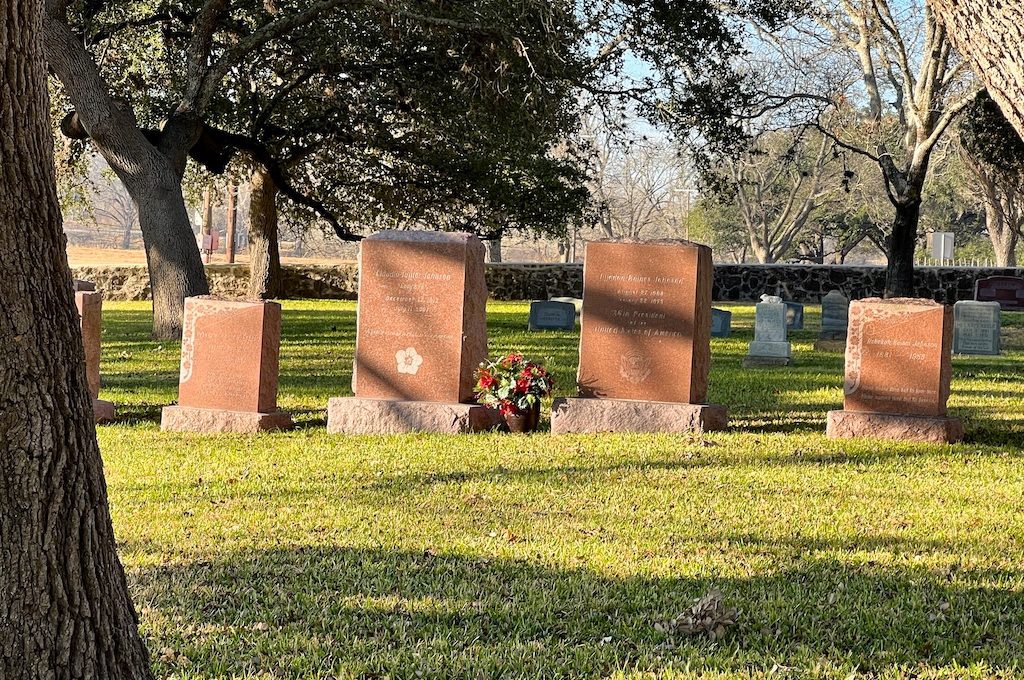
After stopping by the cemetery, you will continue on Park Road until you take a right on Bailey Road which takes you around the airstrip located in the middle of the ranch.
Along this road, you’ll find a lot of different interpretive panels that you can stop at to learn about LBJ’s legacy and how certain features on the ranch like the river may have influenced some of his policies.
There are a couple of stops along the way like the Showbarn but we did not stop and linger at any of the spots until we got near the JetStar.
Tip: At some point, be sure to play “Raindrops Keep Fallin’ On My Head” by B. J. Thomas, a song Johnson was known to listen to as he drove around his ranch in his Lincoln.
JetStar (Air Force “One-Half”)
After making your way around the airstrip you’ll then get into the area where all of the interesting things can be found.
One of the most interesting attractions here is “Air Force 1/2.”
This plane is one of several JetStars that LBJ flew in during his presidency.
This particular plane was acquired by the NPS in 2010 after it was found at the Davis-Monthan Air Force Base boneyard in Tucson, Arizona. After it was retired, it had been sitting in the desert for over two decades.
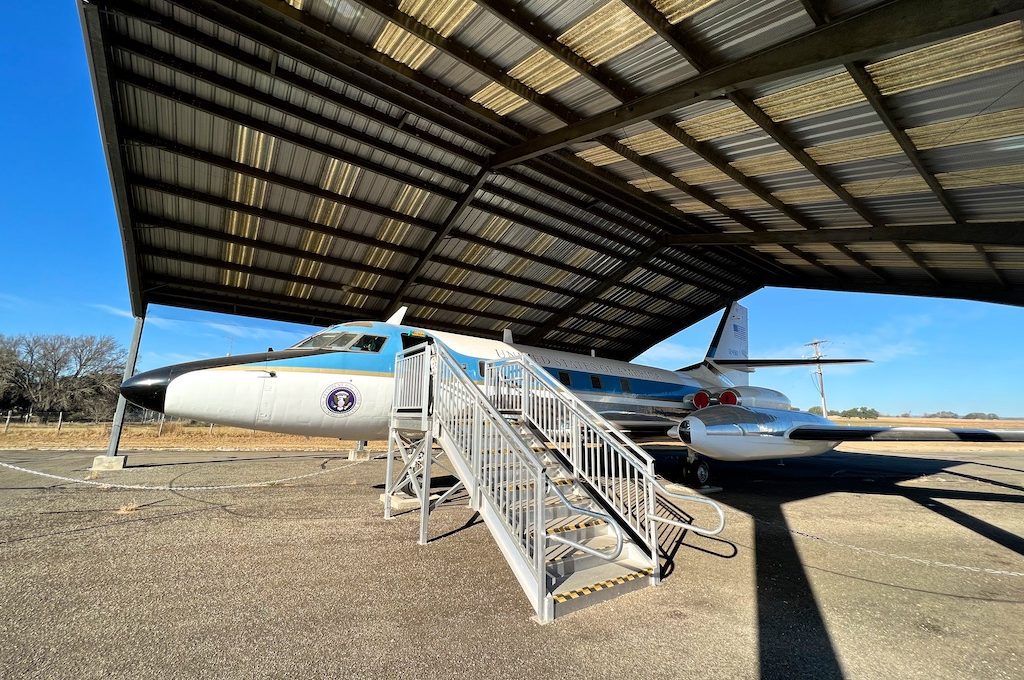
These jets were small enough to land on the airstrip and could be used to go directly from Washington to the ranch.
The “real” Air Force One was a 707 that was just too big for the ranch’s landing strip.
So when the 707 was used they would typically land in San Antonio’s Randolph Air Force Base or Austin’s Bergstrom Air Force Base and then make their way to the ranch via helicopter on Marine One or use the JetStar.
What’s interesting is that you can actually step inside and view the JetStar’s interior (from behind a panel of plexiglass).
One can only imagine the type of discussions and decisions that took place in this tight cabin. Oh, to be a fly on the fuselage….
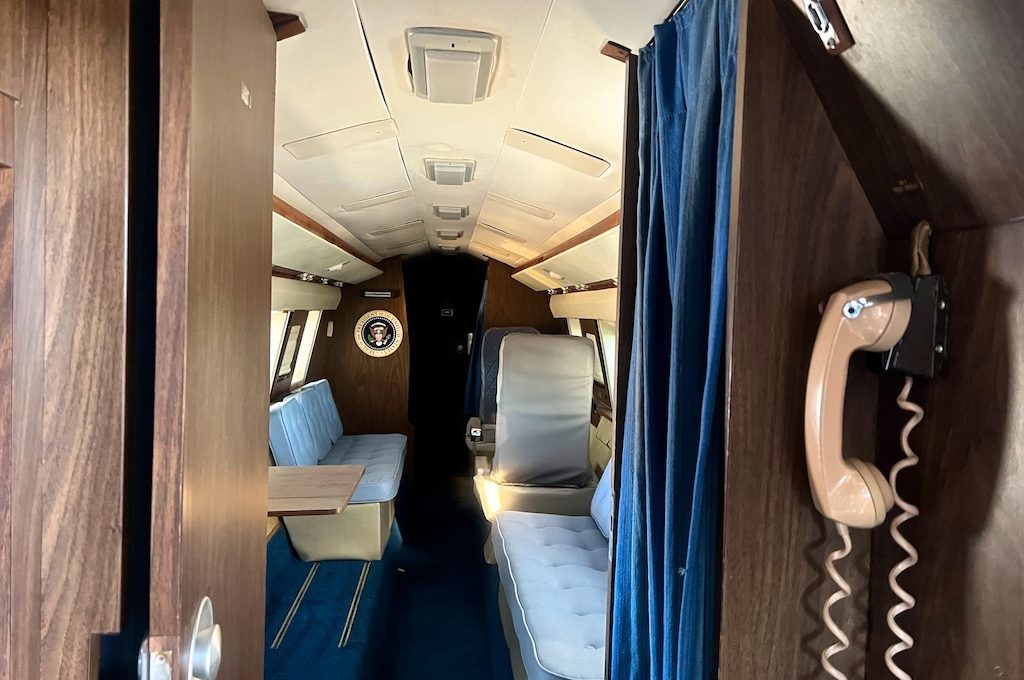
Airplane Hangar Visitor Center
This is one of those national park sites where you really want to take a little bit of time to check out the Visitor Center which is located next to the JetStar.
In the Airplane Hangar Visitor Center, you can find out more about the ranch and visit with some friendly Park Rangers who are very informed about the history of the venue.
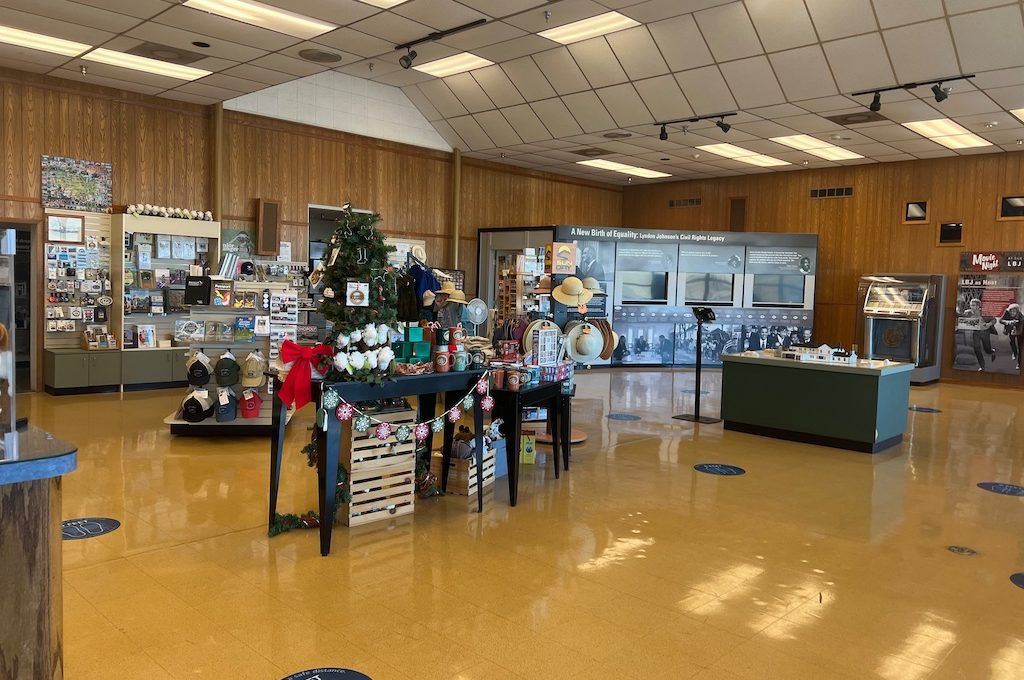
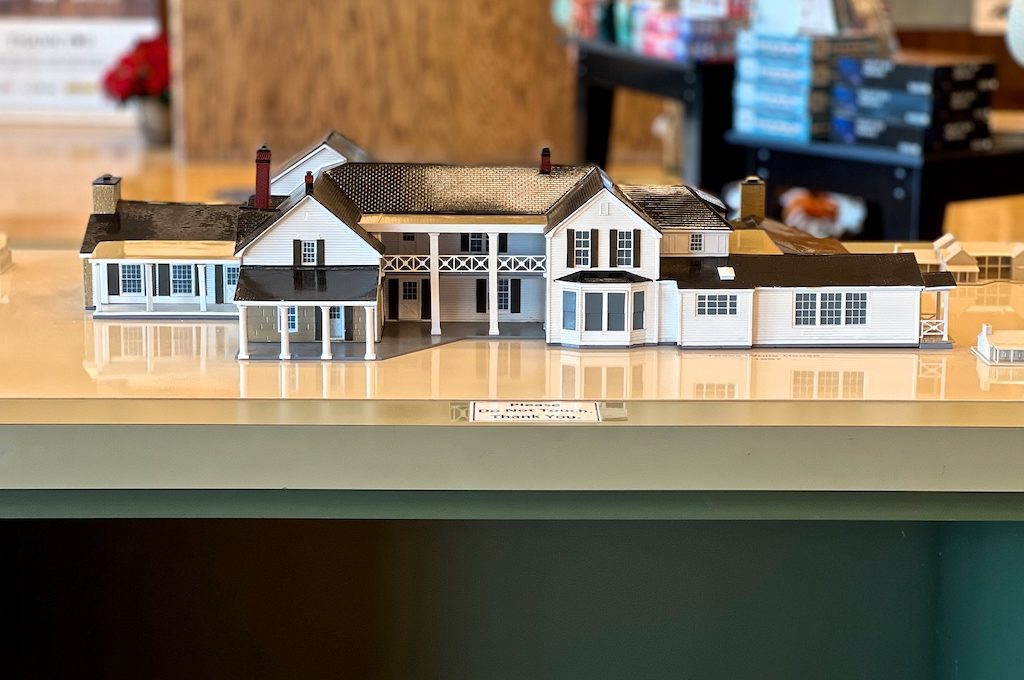
You can also check out some interesting artifacts like LBJ’s get up and the pen he used to sign some big education bills. There are also a few rooms that tell more of the LBJ story.
The visitor center opens about an hour after the ranch so you can always start exploring the facilities nearby before it opens.
I would recommend picking up a map at the visitor center though because it will help you navigate through all the different buildings in this section of the park.
Tip: There is an additional visitor center at the intersection of Ladybird Lane and Avenue G in Johnson City, TX.
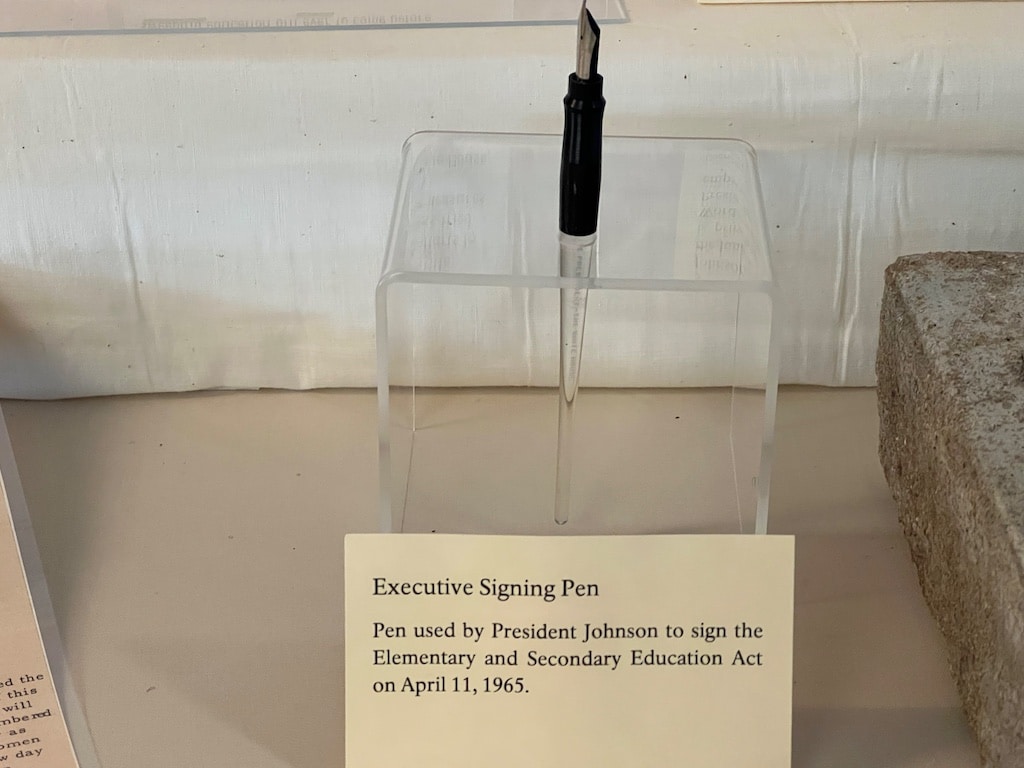
The “Texas White House”
The LBJ Ranch House or the “Texas White House” is the focal point of the entire ranch.
The initial structure, which comprises the limestone wall you’ll see on one side of the house, was built by a German immigrant, William “Polecat” Meier in 1894.
Then in 1909 LBJ’s aunt and uncle, Frank and Clarence Martin, bought the property and added the central portion of the house.
About 30 years later, Johnson purchased it from his aunt along with 240 acres.
As Johnson climbed the political ladder, more features were added to the house including office facilities and the pool out in front.
Today, it has a total of 8 bedrooms and 9 bathrooms.
During his presidency, LBJ spent a lot of time at the ranch house and often had leaders from around the globe come through as well.
In fact, it was at this very ranch where in 1963 JFK was supposed to stay the night after his visit to Dallas. The plan was for him to leave Dallas, go to Austin for a fundraising event, and then head over to the ranch.
You can see what the room JFK would’ve stayed in probably looked like in the photo below.
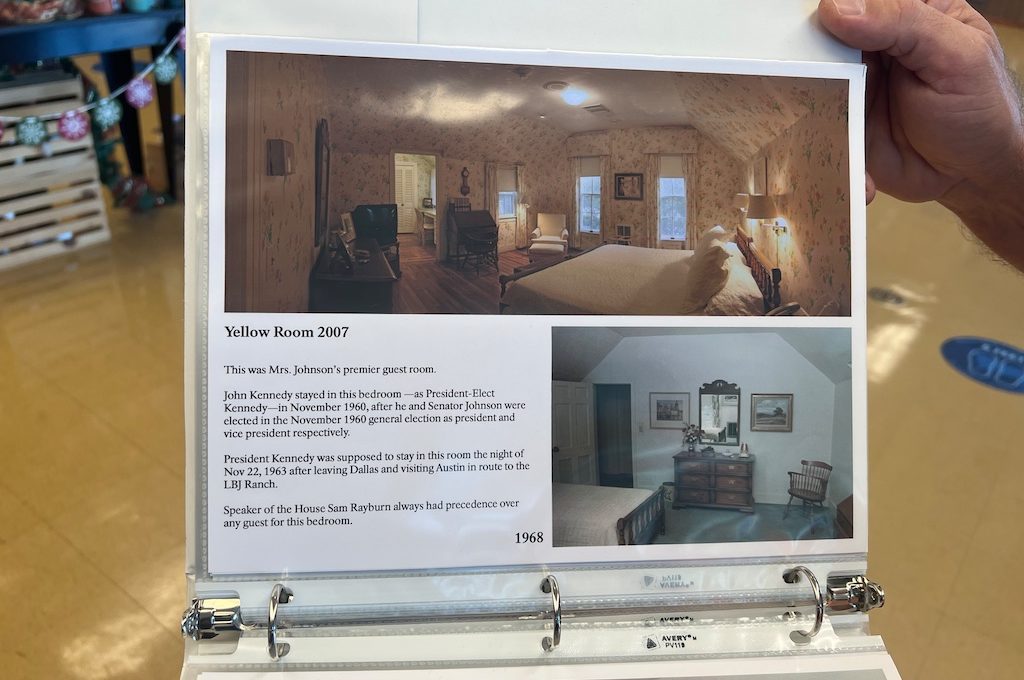
The Texas White House wasn’t just a funny name given to the building it was actually a functioning remote White House — a first of its kind.
LBJ felt more comfortable in his home state and utilized that comfort to his advantage when making deals and negotiating with other leaders from lawn chairs.
It’s estimated that during Johnson’s administration, the President spent approximately 25% of his time in office at the Texas White House (74 visits totaling 490 days).
Unfortunately, you can’t go inside for a tour right now because the building is undergoing a lot of work.
Sadly, it looks like it will be a couple of years before that work is completed so you’ll have to wait some time before getting inside.
In 1972 the Johnsons donated the Texas White House to the National Park Service, just a year before the death of LBJ. After that, Lady Bird Johnson would continue to live at the Ranch part time until her death in 2007.
Did you know? The oak trees found throughout the ranch are evergreen and some may be around 200 years old.
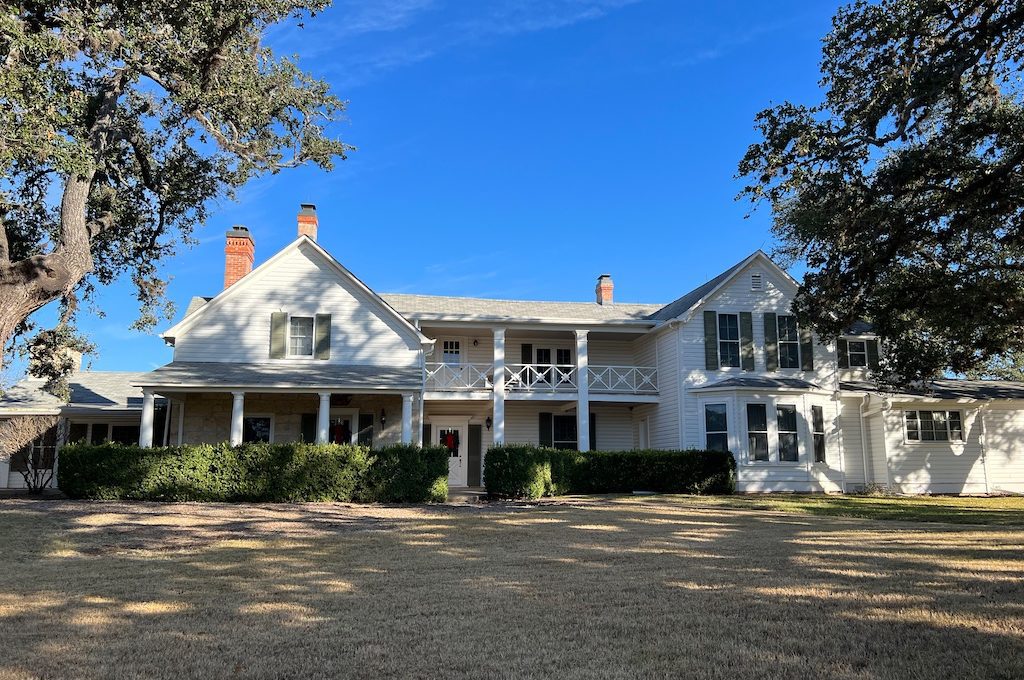
The Klein Shop
The Klein Shop was the maintenance shop for the ranch but now it’s where you can find several of LBJ’s favorite shiny cars from the 1960s.
You’ll find a few different cars but one of the most interesting is the 1962 “Amphicar” which is an amphibious automobile LBJ used to play some tricks on new visitors.
Be sure to hit the interactive exhibit to hear about how those tricks played out.
If you need to use the restroom, you can find a restroom in the back of the interior of the building.
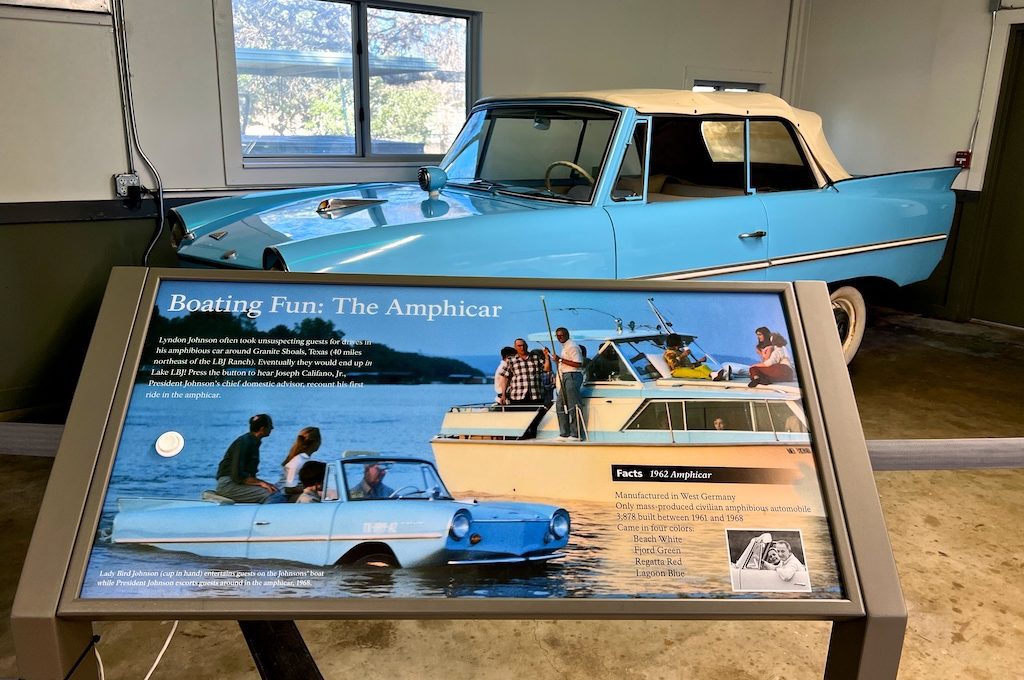
The Friendship Stones
When notable guests came through the ranch, LBJ would sometimes have them leave a lasting impression by drawing their name into wet concrete.
These became known as the Friendship Stones.
For preservation, the original stones were kept in curatorial storage but the NPS has put some of the replicas on display in an area near the back of the ranch.
It’s in this little corner where you can find big names like John F Kennedy, J Edgar Hoover, John Glenn, and dozens of others.
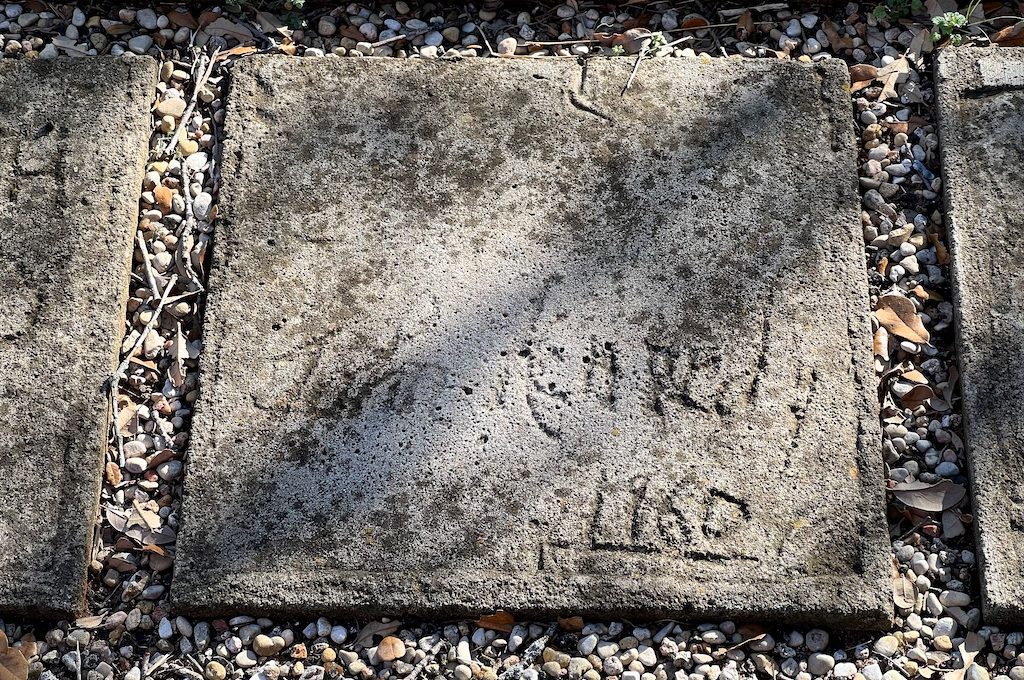
The barbecue grove
LBJ was known for throwing down some huge barbecue bashes by the river.
These were lively events where hundreds of guests dined on barbecued ribs or brisket smoked over pits, as live music filled the air under the oak trees.
Johnson found this to be one of the best ways to get people together and allow them to enjoy themselves. In fact, JFK was supposed to attend one of these major barbecue bashes after his visit to Dallas.
Apparently, every now and again they actually do have a barbecue on site which I think is super cool. I would certainly pay a pretty penny for that experience.
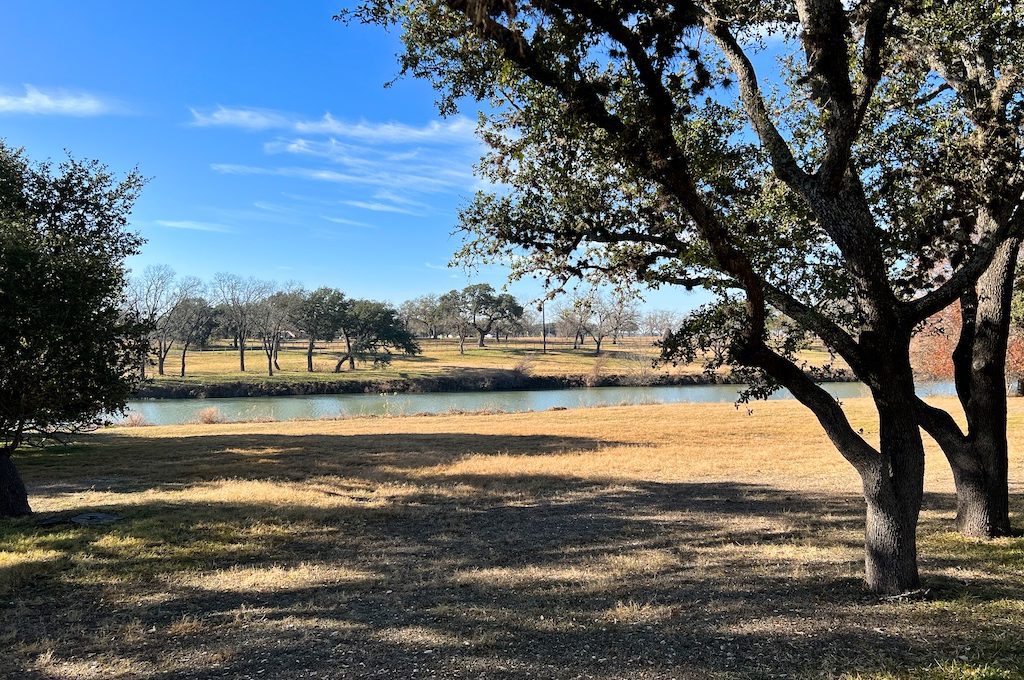
Other places to check out include:
Final word
We visited the ranch on a long drive from Austin to El Paso where we ended up at a hotel that LBJ stayed at.
To be honest I was not expecting much.
But once we entered the ranch and started to gain a better understanding of LBJ and his history, the ranch started to get interesting.
Then, after checking out the presidential jet and other sites like the Texas White House, the car collection, etc., I really got a sense of the history of this place and realized that this is actually quite a hidden gem.
For those reasons, I think the LBJ Ranch is definitely a worthy stop if you are ever in the Austin or San Antonio area.
Daniel Gillaspia is the Founder of UponArriving.com and the credit card app, WalletFlo. He is a former attorney turned travel expert covering destinations along with TSA, airline, and hotel policies. Since 2014, his content has been featured in publications such as National Geographic, Smithsonian Magazine, and CNBC. Read my bio.

